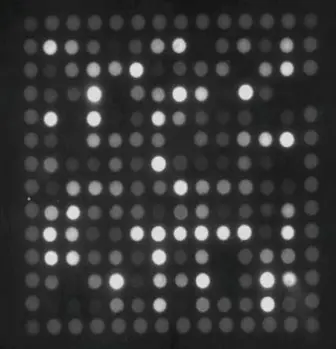Technology Outline
Technology Outline
The PamChip® contains 4 identical peptide arrays, each array containing 144 (STK) or 196 (PTK) peptide sequences 13 amino acids long. The peptides harbor phosphorylation sites derived from literature or computational predictions and are correlated with one or multiple upstream kinases (Protein tyrosine kinases for the PTK PamChip® and Serine-threonine kinases for the STK PamChip®).
During an experiment, the array is incubated with lysates of cells or tissue. The active kinases in the sample will phosphorylate their target on the array. Generic fluorescent labeled antibodies that recognize phosphorylated residues are used to visualize the phosphorylation. Analysis tools can be used to interpret the phosphorylation patterns and generated hypotheses about the differences in kinase activity between conditions.

The PamChip® assay requires only a small amount of lysate to measure the activity of kinases in various samples including cell lines, xenografts and human tissues.